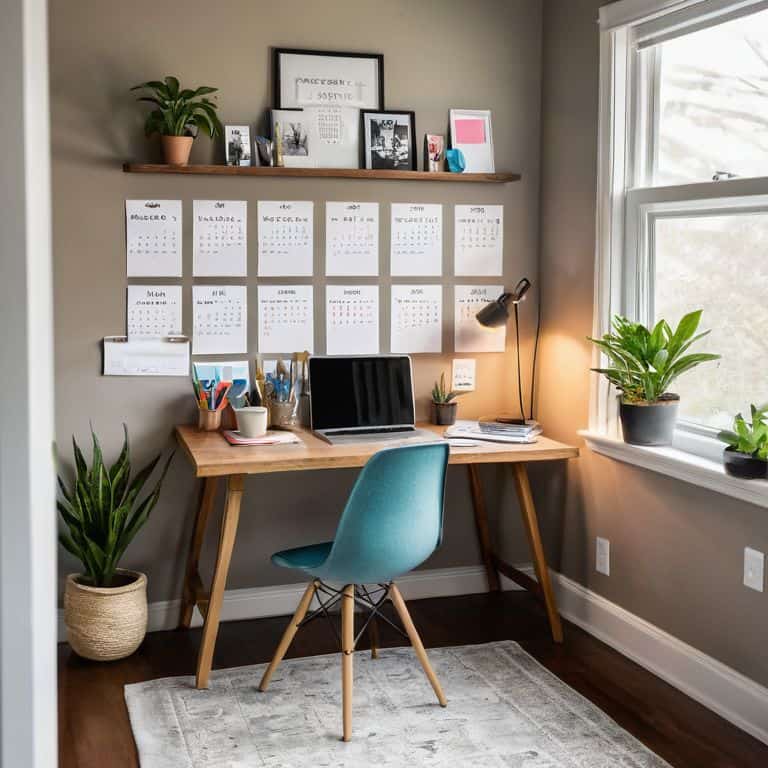I still remember the day I discovered the secret to selling templates and printables on my blog. It was like a lightbulb moment – I realized that these digital products could be the key to turning my passion into a profitable business. For years, I’d been told that creating and selling digital products was a niche strategy, only suitable for a select few. But I’m here to tell you that this is a common myth. The truth is, anyone can create and sell templates and printables, and it can be a game-changer for your online business.
In this article, I’ll share my personal story of how I got started with selling templates and printables, and provide you with a step-by-step guide on how to do the same. You’ll learn how to identify profitable niches, create high-demand products, and market them to your audience. I’ll give you practical tips and actionable advice on how to turn your blog into a sustainable business, without any hype or fluff. By the end of this article, you’ll have a clear understanding of how to create and sell templates and printables, and start building a profitable online business.
Table of Contents
- Guide Overview: What You'll Need
- Step-by-Step Instructions
- Selling Templates Made Easy
- 5 Profit-Boosting Tips to Sell Templates and Printables Like a Pro
- Key Takeaways to Turn Your Blog into a Profitable Business
- Turning Words into Wealth
- Turning Your Passion into a Profitable Business
- Frequently Asked Questions
Guide Overview: What You'll Need

Total Time: 2 hours 30 minutes
Estimated Cost: $100 – $500
Difficulty Level: Intermediate
Tools Required
- Computer (with internet connection)
- Graphic Design Software (e.g., Adobe Illustrator, Canva)
- E-commerce Platform (e.g., Etsy, Shopify)
Supplies & Materials
- Digital Templates (e.g., printable art, worksheets, planners)
- Marketing Materials (e.g., social media graphics, product descriptions)
- Payment Processing System (e.g., PayPal, Stripe)
Step-by-Step Instructions
- 1. First, identify your niche and understand what kind of templates and printables your audience is looking for. This is crucial because it will help you create products that are relevant and in demand, increasing your chances of making a sale. You can use tools like Google Trends or social media to see what’s currently popular and what problems your audience is trying to solve.
- 2. Next, design high-quality templates that are visually appealing and easy to use. You don’t have to be a professional designer to create great templates, but you do need to have an eye for detail and a sense of what your audience will find useful. Consider using design tools like Canva or Adobe Illustrator to create your templates, and make sure they are customizable so that your customers can make them their own.
- 3. Now, develop a pricing strategy that makes sense for your business and your audience. You’ll need to consider the cost of creating and distributing your templates, as well as the value that they provide to your customers. Don’t be afraid to experiment with different pricing tiers and see what works best for you. Remember, the goal is to create a profitable business model that generates consistent revenue.
- 4. Once you have your templates and pricing strategy in place, it’s time to set up an online store where customers can purchase your products. You can use platforms like Etsy or Shopify to create a store, or you can use a plugin like Easy Digital Downloads to sell products directly from your website. Make sure your store is easy to navigate and that your products are clearly displayed.
- 5. To get the word out about your templates and printables, leverage social media to reach your target audience. Share images of your products, provide tutorials and tips on how to use them, and engage with your followers to build a community around your brand. You can also use paid advertising on platforms like Facebook or Instagram to reach a wider audience and drive traffic to your store.
- 6. As you start to sell your templates and printables, track your analytics to see what’s working and what’s not. Use tools like Google Analytics to monitor your website traffic, and track your sales and revenue to see which products are performing best. This will help you refine your product line and marketing strategy over time, and make data-driven decisions about how to grow your business.
- 7. Finally, optimize and improve your templates and printables over time based on customer feedback and sales data. This might involve updating your designs, adding new features or functionality, or creating new products that meet the evolving needs of your audience. By continually improving and expanding your product line, you can build a loyal customer base and create a sustainable business model that generates long-term revenue.
Selling Templates Made Easy

To take your template sales to the next level, focus on creating high-demand products that cater to specific niches or industries. This could be anything from social media graphics for small business owners to custom party invitation templates for event planners. By designing templates for commercial use, you can tap into a larger market and increase your earning potential. For instance, you can use design tools like Canva to create professional-looking templates that are both functional and visually appealing.
When it comes to marketing your templates, developing a solid strategy is key. This could involve utilizing social media platforms to showcase your designs, collaborating with influencers or other bloggers in your niche, or even optimizing your Etsy shop for sales. By leveraging these marketing strategies for digital sellers, you can reach a wider audience and drive more traffic to your template store. Remember, the goal is to create a passive income stream that generates revenue with minimal effort, so it’s essential to set up a system that can run efficiently in the background.
As you continue to grow your template business, consider exploring other passive income ideas for designers, such as creating print on demand products or offering custom design services. By diversifying your revenue streams, you can reduce your reliance on a single income source and build a more sustainable business model. With the right approach and a bit of creativity, you can turn your template sales into a lucrative and profitable venture that generates consistent income over time.
Creating Print on Demand Wealth
Now that we’ve cracked the code on selling templates, let’s dive into the lucrative world of print on demand. I’m obsessed with the potential of print on demand to generate passive income for bloggers. By designing and selling print on demand products, such as mugs, t-shirts, and phone cases, you can create a new revenue stream with minimal upfront costs. My favorite part? You don’t have to hold any inventory, which means you can focus on what you do best – creating amazing content. With the right design and marketing strategy, you can turn your blog into a print on demand powerhouse, earning you money while you sleep.
Designing Templates for Commercial Success
To create templates that fly off the virtual shelves, you need to think like a designer and a marketer. I always say, a great template is one that solves a real problem for your target audience. So, identify the pain points of your niche and design templates that offer solutions. For example, if you’re a food blogger, create customizable meal planning templates that make your audience’s lives easier. Remember, the key to commercial success lies in understanding your audience’s needs and creating products that meet those needs.
When designing your templates, keep it simple, yet professional. Use clean lines, easy-to-read fonts, and make sure they’re customizable. I like to think of my templates as income-generating assets, and I’m sure you will too, once you start selling them. By focusing on solving real problems and designing with commercial success in mind, you’ll be well on your way to creating templates that attract and retain customers.
5 Profit-Boosting Tips to Sell Templates and Printables Like a Pro
- Know your audience inside and out, and create templates and printables that solve a real problem or meet a specific need for them
- Price your products strategically, taking into account production costs, market demand, and the perceived value of your unique designs
- Utilize eye-catching, high-quality images to showcase your templates and printables in action, and make sure your product descriptions are detailed and compelling
- Leverage social media platforms, email marketing, and collaborations with other bloggers or influencers to reach a wider audience and drive traffic to your shop
- Track your sales, profits, and customer feedback meticulously, and use data-driven insights to refine your product line, marketing strategy, and customer experience for maximum ROI
Key Takeaways to Turn Your Blog into a Profitable Business
By creating and selling templates and printables, you can diversify your income streams and turn your blog into a sustainable enterprise, focusing on high-demand products that solve real problems for your audience
Designing templates for commercial success requires a deep understanding of your target market, their pain points, and what motivates them to buy, which can be achieved through data-driven research and testing
Implementing a strategic sales funnel and leveraging print-on-demand services can help you scale your template and printable business, allowing you to reach a wider audience and increase your revenue without sacrificing quality or incurring significant upfront costs
Turning Words into Wealth
Selling templates and printables isn’t just a side hustle, it’s a strategic play to monetize your expertise and turn your blog into a seven-figure business – if you’re willing to put in the work and think like a CEO.
Isabelle Moreau
Turning Your Passion into a Profitable Business

In this guide, we’ve covered the essential steps to selling templates and printables as a way to monetize your blog. From creating print on demand wealth to designing templates for commercial success, we’ve explored the strategies that can help you turn your words into a valuable and sustainable enterprise. By following these steps and staying focused on your goals, you can start generating significant revenue from your blog and build a loyal customer base. Remember, every blog post is a potential asset, and with the right approach, you can unlock its full financial potential.
As you embark on this journey, keep in mind that financial freedom is within reach. It’s time to stop treating your blog like a hobby and start building it as a profitable business. With dedication, hard work, and a willingness to learn, you can create a thriving online enterprise that generates wealth and fulfills your passion. So, don’t be afraid to take the first step, and remember that every small victory counts. You got this, and I’m excited to see the incredible things you’ll achieve as you turn your passion into a profitable business.
Frequently Asked Questions
How do I price my templates and printables to ensure I'm making a profit without scaring off potential buyers?
Pricing is a delicate dance. I recommend researching your competition, calculating production costs, and considering the value your templates and printables bring to customers. A good rule of thumb is to start with a lower price point and gradually increase as you gain traction and build a loyal customer base.
What are the most popular types of templates and printables that tend to sell well, and how can I create my own unique versions?
Let’s dive into the top-selling templates and printables: planners, worksheets, and social media graphics are always in demand. To create your own unique versions, identify a niche or theme that resonates with your audience, then design templates that solve a specific problem or meet a particular need – think customizable meal planners or budgeting worksheets.
Are there any specific licensing or copyright considerations I need to be aware of when selling templates and printables, especially if I'm using copyrighted materials or collaborating with other designers?
Let’s talk licensing and copyright – it’s crucial to understand the rules when selling templates and printables. If you’re using copyrighted materials, ensure you have permission or the necessary licenses. When collaborating with designers, establish clear contracts outlining ownership and royalty splits to avoid costly disputes down the line.
